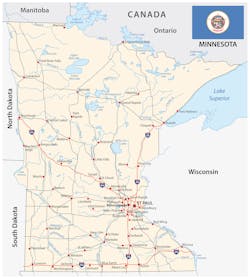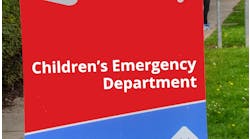Minnesota’s EHR Consortium Helps Inform Statewide Vaccine Equity Efforts
The State of Minnesota doesn’t have a health information exchange, but it does have a year-old EHR consortium involving 11 health systems that has proved vital in helping health system leaders understand trends in COVID vaccination equity.
The mission of the Minnesota EHR Consortium is to improve health by informing policy and practice through data-driven collaboration among 11 of the largest health systems across Minnesota. It includes the Minnesota Department of Health as well as two statewide organizations — the Institute for Clinical Systems Improvement and Minnesota Community Measurement — that have long histories of collaboration with the health systems in Minnesota.
“Our vision is to be the leading research network collaborating across Minnesota to equitably improve health outcomes,” said Tyler Winkelman, M.D., co-director of the Health, Homelessness, and Criminal Justice Lab and associate director of the Virtual Data Warehouse at the Hennepin Healthcare Research Institute. He was speaking during the April 16 meeting of the NIH Collaboratory. “In general, what we do is monitor population-level health metrics and analyze changes over time, using aggregations of data to inform public health policy.”
The group’s COVID-19 vaccine project exists to inform the equitable distribution of COVID-19 vaccines. “As we've developed the project, we've really been intentional about trying to fill gaps in surveillance data in this state, and not to simply reproduce data that already exist,” Winkelman said.
“We have worked very closely with the Health Department and with our health systems to understand what's already being done, and where through this collaboration, we could provide additional data that is not readily available from existing sources. The consortium has access to more granular information, but we also have some capabilities to merge in novel data sources that aren't readily available through other means,” Winkelman said. “We have relatively robust race, ethnicity, and language data. The Health Department has some of this information, but they generally don't have language data. In many cases, the race or ethnicity data is spotty. We have comorbidity data for people across the state. We can combine testing and vaccine data, as well. And we're using that as an opportunity to start to understand vaccine breakthrough.”
The consortium also has experience merging different data sets. This is particularly important for its work around social determinants of health, where they are looking at vaccine rates among key populations experiencing housing insecurity, homelessness or incarceration. “It used to be that we really weren't a terribly reliable source for the weekly dosage reporting of vaccine at the state level, because our coverage was spotty,” Winkelman said. “But we now report on more or less all of the vaccines across the state. We use the identified summary information. and put together a report on vaccine administration by race, ethnicity, language, and comorbidity status.”
Winkelman said the EHR consortium has been successful in part because it has had a keen focus on privacy. They decided to use a distributed data model, he explained. Data sit at the health systems and are analyzed there. Then summary data are sent to a central site for aggregation. “We aren't creating a single large repository,” he said. “The patient data stays with the health systems, and we're operating in the world of summary data. The entire collaboration is voluntary. Folks can choose which pieces they want to be involved in, in which they don't, and what's most relevant for their particular system. We have really tried to foster principles of good governance through a steering committee that has formed somewhat organically.
The steering committee makes all major decisions for the group and allows for input of all of the sites and organizations involved in the consortium. “That has fostered a sense of trust and community that is very important for our group,” Winkelman said. “Some of these solutions that we've developed are geared toward being adaptable and in nimble. That has been particularly important during these uncertain times, when we often don’t know what data are going to be needed next, or there could be data elements that all of a sudden become really important that weren't on our radar two weeks ago.”
Paul Drawz, M.D., M.H.S., an associate professor in the Division of Renal Disease and Hypertension at the University of Minnesota, spoke about the data infrastructure and sources that they rely on for the COVID vaccine project, as well as what they are looking forward to in terms of projects involving other chronic conditions.
“We rely primarily on electronic health record data. Most of the health systems are pulling from virtual data warehouses,” Drawz said. “They're not pulling directly from the EHR. Some of the sites have a common data model and have participated in collaborations with organizations like PCORnet or HCSRN. That would include sites like Mayo Clinic, Ascension, Allina, Health Partners, and the University of Minnesota. They have transformed the EHR data into an intermediate common data model.
“We haven't adopted one common data model across all of the health systems,” Drawz explained. “We've only really been a collaborative for about 13 months. In 12 of those months, we've been working on COVID, putting out fires pretty much day to day. So we are looking forward to May, when theoretically, we're going to start talking as a group about the potential for adopting a common data model across the 11 health systems.”
One key data source is the Minnesota Immunization Information Connection (MIIC). All vaccines delivered in the State of Minnesota outside of the VA and some Indian Health Service locations are reported to MIIC. When a patient is registered for an encounter at a health system, the health system pings MIIC and the vaccine data comes back to the health system if there's a match, based on a number of patient identifiers. “We have set up a system where we use hash ID, which are based on first name, last name, date of birth, and zip code and gender to match vaccine data from MIIC to patients and electronic health record data,” Drawz said. He added that they have plans to add social vulnerability index data as well as homeless shelter data and incarceration data to look at disparities in vaccine distribution in these vulnerable populations, as well as state mortality data.
Winkelman and Drawz demonstrated the EHR consortium’s dashboard, which includes Minnesotans who have received the COVID-19 vaccine from any source and had a visit at a consortium site in roughly in the last 10 years. They showed vaccination data stratified by a number of different variables, including race, ethnicity, gender, language, whether the patient uses an interpreter, and then zip code, income, and urban vs. rural. Each of these can be stratified by age, with the denominators primarily coming from census data. Researchers can look at rates of vaccine for having received at least one dose, or having a completed vaccine series. They have a metric that highlights disparities in vaccines by race and ethnicity on a weekly basis.
The data show that early on, vaccination rates for Black and Hispanic Minnesotans were low. “Then there was a large effort across the health systems to increase outreach to different populations across the state, and rates among Hispanic, Black and Asian Minnesota increased,” Winkelman said. He added that the dashboard can help show whether disparities are staying the same or getting better or worse.
Drawz said COVID really sped up the collaborative work the organizations were starting on. “We recognized that we had data that could inform the pandemic, and even more so inform the vaccine distribution. When we came together, Friday, the 13th of March 2020, I don't think many of us were thinking about doing COVID projects,” he added. “We had expertise in diabetes, hypertension, chronic kidney disease, and substance use disorders. But because of COVID, we've built a collaboration and trust and have worked together in a way that if this hadn't happened, we would never have gotten to where we are this quickly. I think we'd still be working on a data use agreement.”


